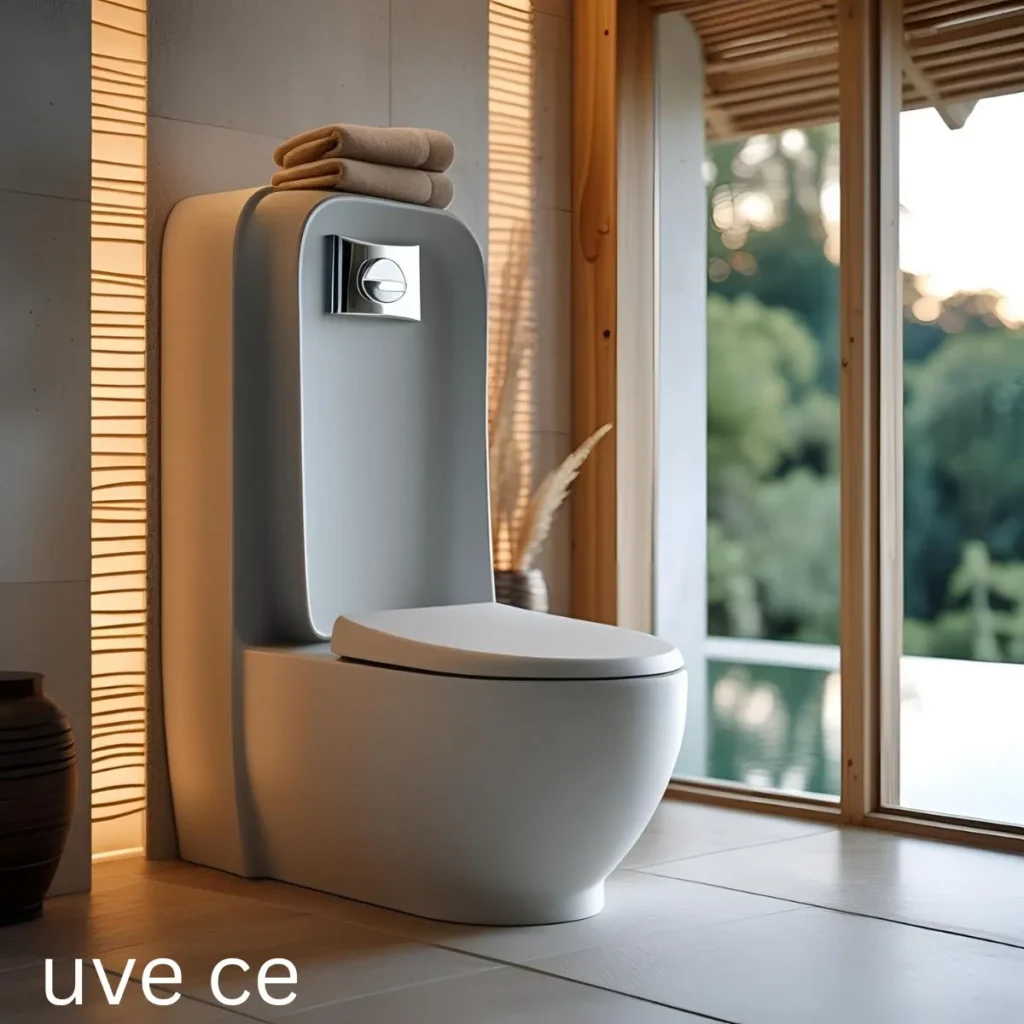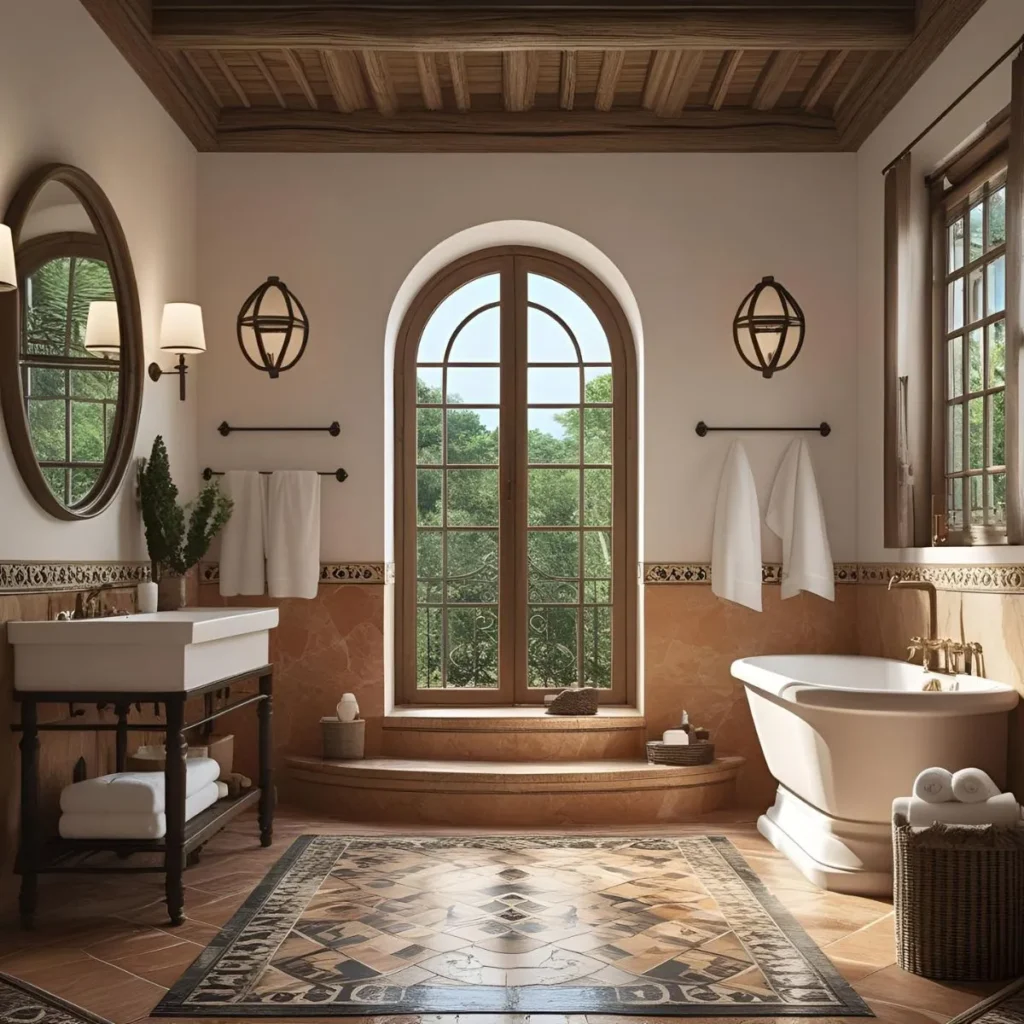Knowing how to say bathroom in Spanish is incredibly useful in everyday situations. The most common word is “baño,” which is widely understood across Spanish-speaking countries. You might also hear variations like “servicio” or “aseo” depending on the region or context.
Learning how to say bathroom in Spanish ensures you can ask for directions, navigate public places, and communicate more confidently when you need it most.
Say Bathroom in Spanish
👍 Here’s the numbered table with 15 phrases for Say Bathroom in Spanish:
| # | English Phrase | Spanish Translation |
|---|---|---|
| 1 | Where is the bathroom? | ¿Dónde está el baño? |
| 2 | I need to use the bathroom. | Necesito usar el baño. |
| 3 | Is there a bathroom here? | ¿Hay un baño aquí? |
| 4 | Excuse me, where’s the restroom? | Disculpe, ¿dónde está el baño? |
| 5 | Can I go to the bathroom? | ¿Puedo ir al baño? |
| 6 | Is the bathroom occupied? | ¿Está ocupado el baño? |
| 7 | The bathroom is over there. | El baño está allá. |
| 8 | I can’t find the bathroom. | No encuentro el baño. |
| 9 | Do you have a bathroom? | ¿Tiene un baño? |
| 10 | The bathroom is clean. | El baño está limpio. |
| 11 | The bathroom is dirty. | El baño está sucio. |
| 12 | I’m looking for the restroom. | Estoy buscando el baño. |
| 13 | May I use your bathroom? | ¿Puedo usar su baño? |
| 14 | The bathroom is out of order. | El baño está fuera de servicio. |
| 15 | The bathroom is upstairs. | El baño está arriba. |
1. Baño
Origin:
“Baño” comes from the verb bañar, meaning “to bathe.” It’s the most widely used and understood word for bathroom in all Spanish-speaking countries.
Example:
👤 Usuario A: Disculpe, ¿dónde está el baño?
👤 Usuario B: Al fondo a la derecha.
Use: Universal, polite, and standard.
2. Servicio
Origin:
“Servicio” literally means “service.” In public places, it’s often used to refer to restrooms in a polite way.
Example:
👤 Usuario A: ¿Tienen servicio para clientes?
👤 Usuario B: Sí, está al lado de la cocina.
Use: Polite; common in restaurants and public spaces.
3. Aseo

Origin:
“Aseo” means “cleanliness” or “hygiene.” In Spain, especially in formal settings, it’s a common word for bathroom.
Example:
👤 Usuario A: ¿Dónde están los aseos?
👤 Usuario B: Al fondo del pasillo.
Use: More formal; common in Spain.
4. Toilette
Origin:
Borrowed from French, toilette is used in some Latin American countries, especially Argentina, often in more refined or European-influenced contexts.
Example:
👤 Usuario A: ¿Dónde está el toilette?
👤 Usuario B: Al lado del guardarropa.
Use: Stylish or upscale settings.
5. Retrete
Origin:
Derived from old Spanish for “retreat” or a private room. It now refers directly to the toilet itself.
Example:
👤 Usuario A: Creo que el retrete está tapado.
👤 Usuario B: Voy a revisarlo ahora.
Use: Refers more to the toilet fixture than the whole bathroom.
6. Sanitario
Origin:
From the word sanidad (sanitation), it’s often used on signs in airports, malls, or public places.
Example:
👤 Usuario A: ¿Dónde están los sanitarios?
👤 Usuario B: Siga las flechas verdes.
Use: Formal and common in Mexico and Central America.
7. WC (uve ce)

Origin:
Short for “Water Closet” (an old British term). In some places, it’s pronounced as “uve ce” in Spanish.
Example:
👤 Usuario A: ¿Este tren tiene WC?
👤 Usuario B: Sí, en el último vagón.
Use: Found on signs, especially in international settings.
8. Lavabo
Origin:
“Lavabo” means “washbasin” or sink, but in some countries, it refers to the whole bathroom.
Example:
👤 Usuario A: ¿Dónde está el lavabo?
👤 Usuario B: Justo al salir del salón.
Use: More common in Spain.
9. Excusado
Origin:
From the idea of being “excused”—it’s an old-fashioned term that refers to the toilet or bathroom.
Example:
👤 Usuario A: ¿Puedo usar el excusado?
👤 Usuario B: Claro, por allá.
Use: Slightly outdated, but still heard in Mexico.
10. Cuarto de baño

Origin:
Literally means “bathroom” (room for bathing). A full and formal way to say it.
Example:
👤 Usuario A: ¿Tu cuarto de baño tiene ducha?
👤 Usuario B: Sí, y también bañera.
Use: Formal; often used in home descriptions.
11. Cuartito
Origin:
Diminutive form of cuarto (room), often used affectionately or in rural areas.
Example:
👤 Usuario A: ¿Dónde está el cuartito?
👤 Usuario B: Afuera, detrás de la cocina.
Use: Informal, regional.
12. Privado
Origin:
Means “private” and is sometimes used to discreetly refer to the bathroom in businesses or cafés.
Example:
👤 Usuario A: ¿Hay un privado para clientes?
👤 Usuario B: Sí, al fondo.
Use: Subtle or discreet term.
13. Trono (Slang)
Origin:
“Trono” means “throne,” used humorously to refer to the toilet as a king’s seat.
Example:
👤 Usuario A: Necesito ir al trono urgente.
👤 Usuario B: ¡Jajaja! Está libre.
Use: Very informal and humorous.
14. Baño público
Origin:
Literally “public bathroom.” Useful when asking for restrooms in parks, stations, or cities.
Example:
👤 Usuario A: ¿Dónde hay un baño público por aquí?
👤 Usuario B: En la plaza, al lado de la fuente.
Use: Specific for public spaces.
15. Letrina
Origin:
Refers to a latrine or simple outdoor toilet. Comes from military and rural language.
Example:
👤 Usuario A: ¿Hay alguna letrina por aquí?
👤 Usuario B: Sí, al lado del campo.
Use: Rural or rustic settings.
FAQs
1. How do you say “bathroom” in Spanish?
The most common word is “baño.”
2. How do I ask “Where is the bathroom?” in Spanish?
Say “¿Dónde está el baño?”
3. How do you pronounce “baño”?
It’s pronounced: BAH-nyo (the ñ sounds like “ny” in canyon).
4. Is there a polite or formal way to ask?
Yes: “Disculpe, ¿dónde está el baño?” (Excuse me, where is the bathroom?)
5. How do you say “public bathroom” in Spanish?
Say “baño público.”
6. What do I say if I need the bathroom urgently?
Say “Necesito usar el baño.” (I need to use the bathroom.)
7. How do you say “restroom” in Spanish?
You can say “servicios” or “aseos” (commonly used in Spain).
8. How do you say “toilet” in Spanish?
Say “inodoro” (the actual toilet fixture).
9. How do you say “men’s bathroom” and “women’s bathroom”?
- Baño de hombres (men’s)
- Baño de mujeres (women’s)
10. How can I recognize bathroom signs in Spanish-speaking countries?
Look for WC, Servicio, Baños, or symbols 🚺 🚹.
Conclusion:
Now that you know how to say bathroom in Spanish, you can travel or interact in Spanish-speaking places with greater ease.Whether you use “baño,” “servicio,” or “aseo,” understanding these terms helps you handle one of the most essential needs politely and clearly. It’s a small but important part of everyday communication.



